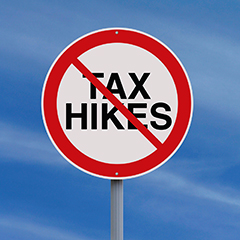The New PATH Act Contains Four Payroll Tax Changes
January 8, 2016 | Fraud Prevention, IRS Regulation, Tax Planning, Tax Preparation
 The tax law passed by Congress and signed by President Obama on December 18th contains some payroll tax provisions that are of interest to Maine employers. Here are four changes in the Protecting Americans from Tax Hikes Act of 2015 (PATH Act).
The tax law passed by Congress and signed by President Obama on December 18th contains some payroll tax provisions that are of interest to Maine employers. Here are four changes in the Protecting Americans from Tax Hikes Act of 2015 (PATH Act).
1. There will be an earlier deadline for filing information returns in 2017.This provision will apply beginning with returns and statements filed in 2017. Currently, the deadline for paper filers to file these returns is the end of February (the end of March for electronic filers). The new law will require W-2, W-3, and 1099 forms (including Form 1099-MISC) to be filed on or before January 31 of the year following the calendar year to which such returns relate, regardless of whether the forms are filed on paper or electronically.
2. There’s now parity between employer-provided mass transit and parking benefits.These transportation benefits match the exclusion for qualified parking benefits, and, and the new law permanently extends the maximum monthly exclusion amount for transit passes and van pool benefits.
The 2015 maximum monthly exclusion amount for transit passes and van pool benefits has been retroactively increased from $130 to $250. The 2016 maximum monthly exclusion amount for transit passes and van pool benefits has increased from $130 to $255 in order to match the monthly exclusion for qualified parking benefits. These fringe benefits are excluded from an employee’s wages for payroll tax purposes and from gross income for income tax purposes
3. There will be a safe harbor from penalties for small-dollar errors on W-2 forms.The new law establishes a safe harbor for de minimis errors on information returns and payments if the error was $100 or less ($25 or less for errors involving tax withholding). Issuers of information returns and payee statements won’t be subject to penalties for failure to file correct information returns and failure to furnish correct payee statements in these cases, and the issuer also won’t be required to file a corrected return, again, if the error was $100 or less, or $25 or less for errors involving tax withholding.
Recipients of the payee statement (for example, employees who receive Form W-2) will be able to request that they receive a corrected statement and that the statement be filed with the IRS. This provision is effective beginning with returns and statements filed after December 31, 2016.
4. The federal government may require employers to use a truncated SSN on W-2 forms. The new law allows the federal government to require employers to use an “identifying number” for each employee rather than an employee’s SSN on Form W-2. This change permits the U.S. Department of the Treasury to promulgate regulations requiring or permitting a truncated SSN on Form W-2. This provision may have more developments, and is designed to reduce the risk of identity theft.
